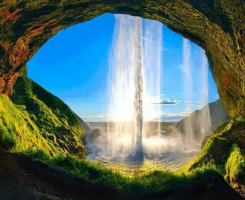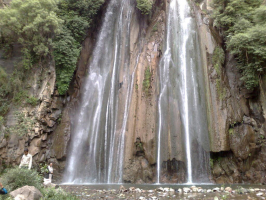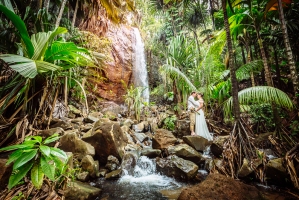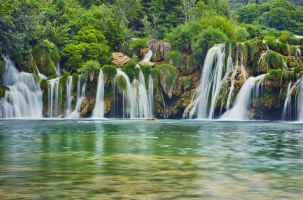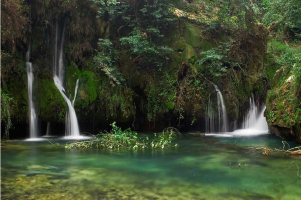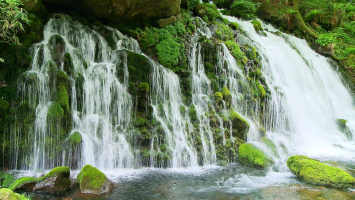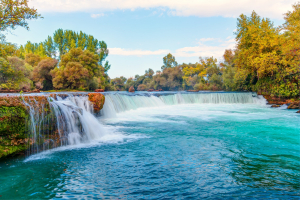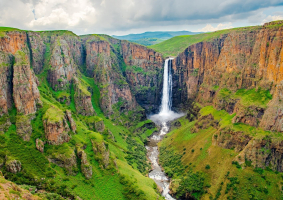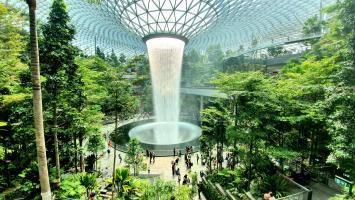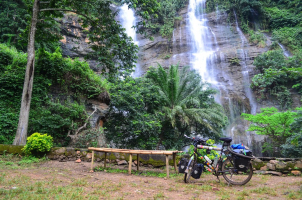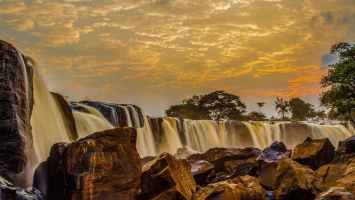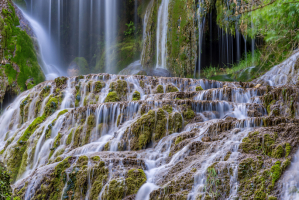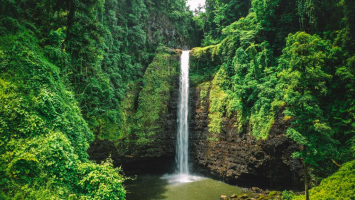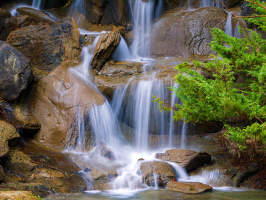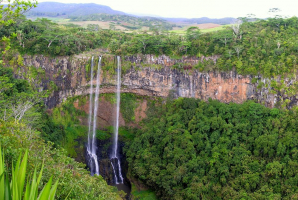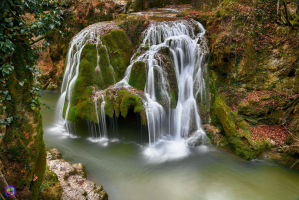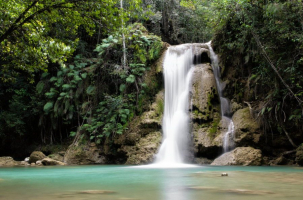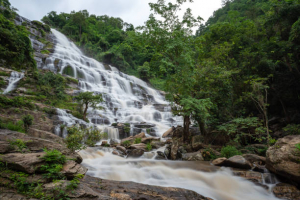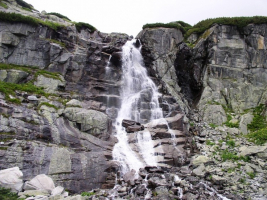Top 10 Most Beautiful Waterfalls in Yosemite
Yosemite National Park in Sierra Nevada, California is a prime example of an unspoiled natural environment with its massive ancient sequoias and the granite ... read more...cliffs of El Capitan. Millions of years ago, Yosemite was formed by glacial activity and small glaciers still exist today. The park is filled with beautiful waterfalls that can be seen anywhere. They mostly change with the seasons, summers are dry, while in the middle of winter they seem to freeze. Here are the 10 Most Beautiful Waterfalls in Yosemite that Toplist would like to introduce to readers.
-
Yosemite Falls, which plunges a total of 2,425 feet (739 m) from the summit of the upper fall to the foot of the lower fall, is the tallest waterfall in Yosemite National Park. It is a top tourist destination in the park and is situated in the Sierra Nevada of California, especially in the late spring when the water flow is at its highest.
There are three drops in the waterfall including Upper Yosemite Falls, Lower Yosemite Falls, and Middle Cascades. Both the top and bottom of Upper Yosemite Falls can be reached by trails that ascend from the valley floor and descend from other park areas outside the valley. The swift currents of Yosemite Creek created cascades above them after flowing through the Eagle Creek Meadow and down to the brink of a hanging valley in a jarring and overwhelming show of force.
A group of four small plunges known as the Middle Cascades sits between two obvious main plunges. Together they form a 675-foot (206 m) waterfall, more than twice as tall as Lower Falls. However, it is rarely noticed due to the narrow, concave nature of the canyon, and the lack of public access.
In Yosemite Valley, Lower Yosemite Falls is conveniently located next to Yosemite Lodge. An approximately 3.5-mile (5.6-kilometer) climb commencing at Camp 4 in Yosemite Valley will take you to the top of Upper Yosemite Falls. The hike is steep, challenging, and frequently crowded.
In sum, Yosemite Falls:
- The tallest waterfall in Yosemite National Park.
- Situated in the Sierra Nevada of California.
- Three drops in the waterfall include Upper Yosemite Falls, Lower Yosemite Falls, and Middle Cascades.
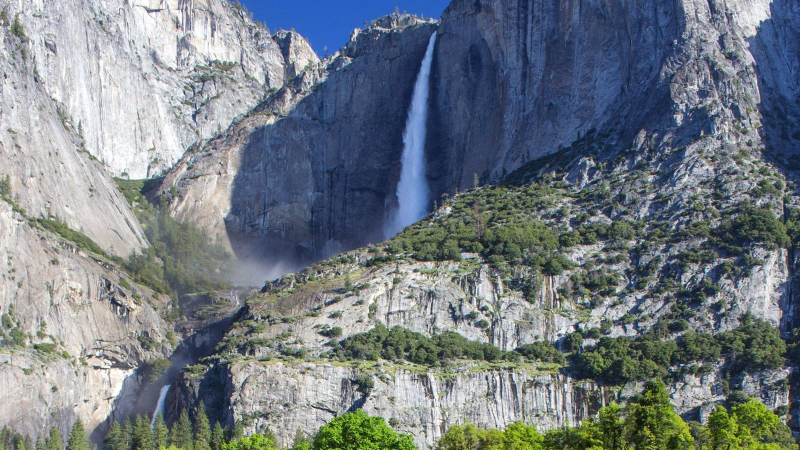
yosemite.com 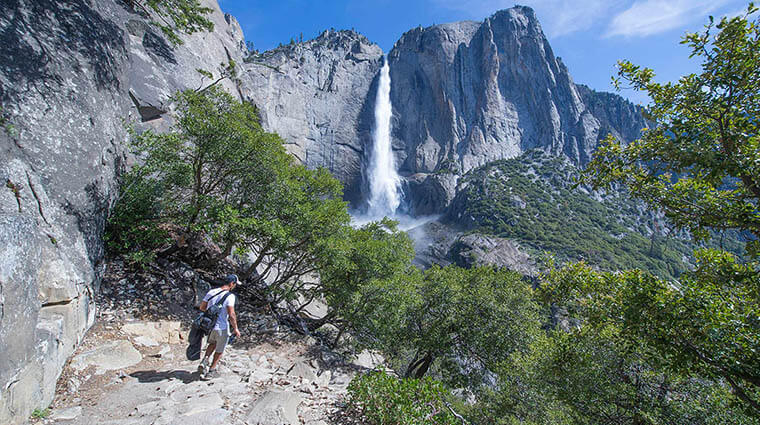
yosemite.com -
Lehamite Falls is a small-volume waterfall in Yosemite National Park. Immediately to the right of Yosemite Falls and visible from above Yosemite Village, the falls are situated in a little gap in the north wall of Indian Canyon. Similar to Sentinel Fall, it consists of an extensive network of steep falls that descend deep into Yosemite Valley.
Le-ham-i-te, a phrase the local Native Americans used to describe Indian Canyon, is said to mean "arrow wood," according to Lafayette Bunnell, one of the discoverers of Yosemite Valley. When the name India Gorge was adopted, the title "Lehamite" eventually drifted to the falls and adjacent creek, Lehamite Falls and Creek.
The falls start out as rocky portions with individual steps, and finally descend in a ponytail, dropping a total of 1,130 feet through a fissure in the granite cliffs. The intricacies of Lehamite Falls' shape and characteristics are unknown outside of what can be seen from the meadows of Yosemite Valley since access to the bottom of the waterfall is so difficult. Furthermore, being located near Yosemite Falls and appearing only in early spring or after a heavy rainstorm, Lehamite Falls is also rarely seen and is the lesser-visited large waterfall in Yosemite National Park.
In short, Lehamite Falls:
- A small-volume waterfall in Yosemite National Park, located in a tributary of the Indian Gorge, near Yosemite Village.
- The term "Lehamite" is known as arrow wood.
- Consists of sections of rock with individual steps, and descends in a ponytail for a total of 1,130 feet through a fissure in the granite cliff.
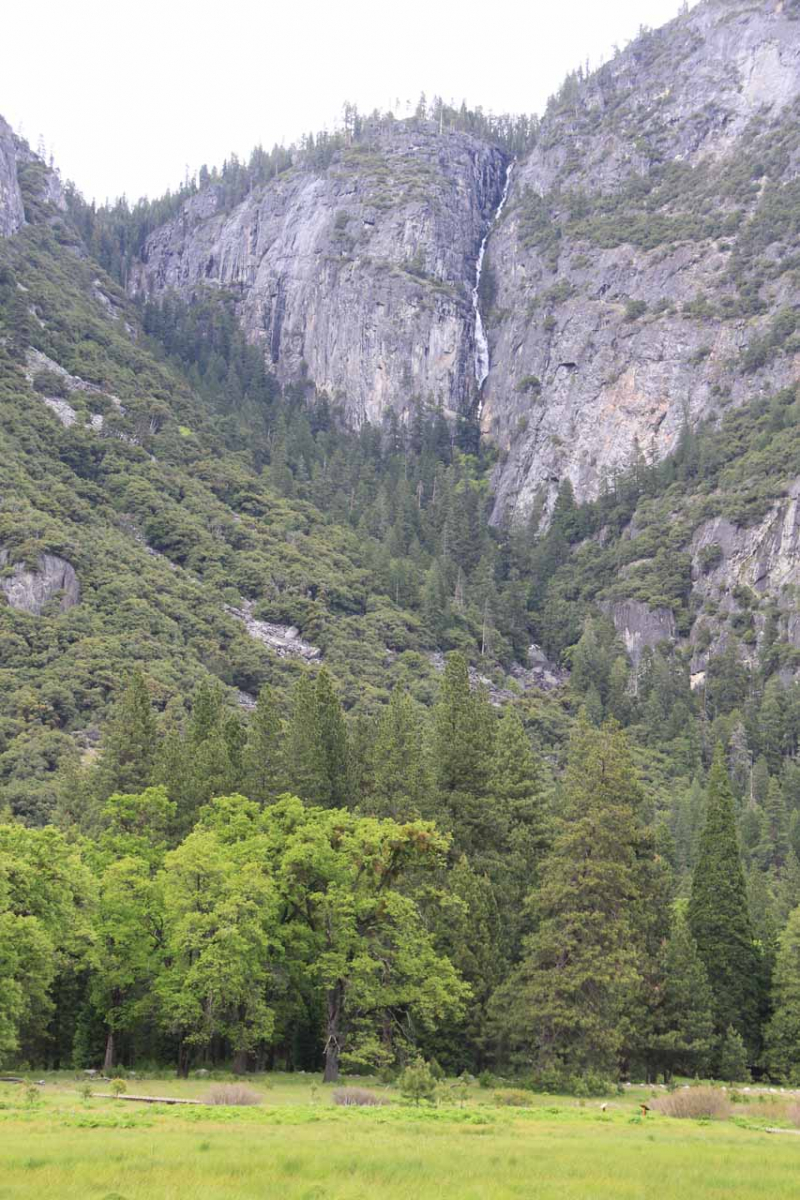
world-of-waterfalls.com 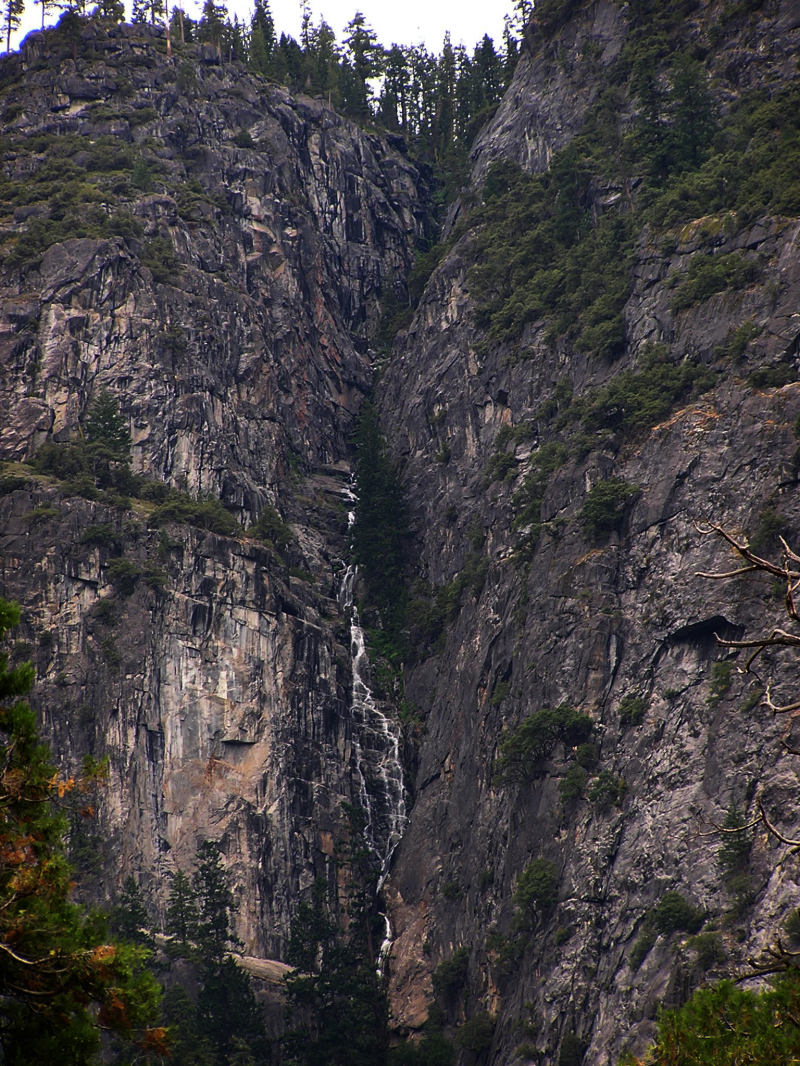
wikipedia.org -
Sentinel Falls is the second-tallest waterfall in Yosemite National Park and the tallest waterfall south of Yosemite Valley. The falls are made up of about a dozen separate steps ranging in height from 50 to 690 feet, of which four fall at least 200 feet each. However, due to the huge size and inaccessibility of the falls, it is difficult to determine the exact height of each step.
At more than 7,200 feet above sea level, the falls' Sentinel Creek crosses Yosemite Valley after draining a small basin near Glacier Point Road. Sentinel Creek may flow for longer periods of time than any other seasonal waterfall in Yosemite Valley thanks to its expansive drainage basin, which is larger than that of any of the other waterfalls in the valley. The waterfall will, nonetheless, be entirely dry by August, even in years with exceptionally high snowfall.
According to how the falls have been plotted, the USGS Half Dome quadrangle depicts Sentinel Creek running northeast of a tiny domed knoll right above the falls at roughly the 7360-foot level. But in pictures of Sentinel Falls, the creek can be seen flowing into Yosemite Valley southwest of this mound. The falls are not any taller than previously believed, although this does explain why they do not seem to dogleg to the left right after the first tier of the fall.
To conclude, Sentinel Falls:
- The second-tallest waterfall in Yosemite National Park and the tallest waterfall south of Yosemite Valley at more than 7,200 feet above sea level.
- Are made up of about a dozen separate steps ranging in height from 50 to 690 feet.
- The waterfall will be entirely dry by August.
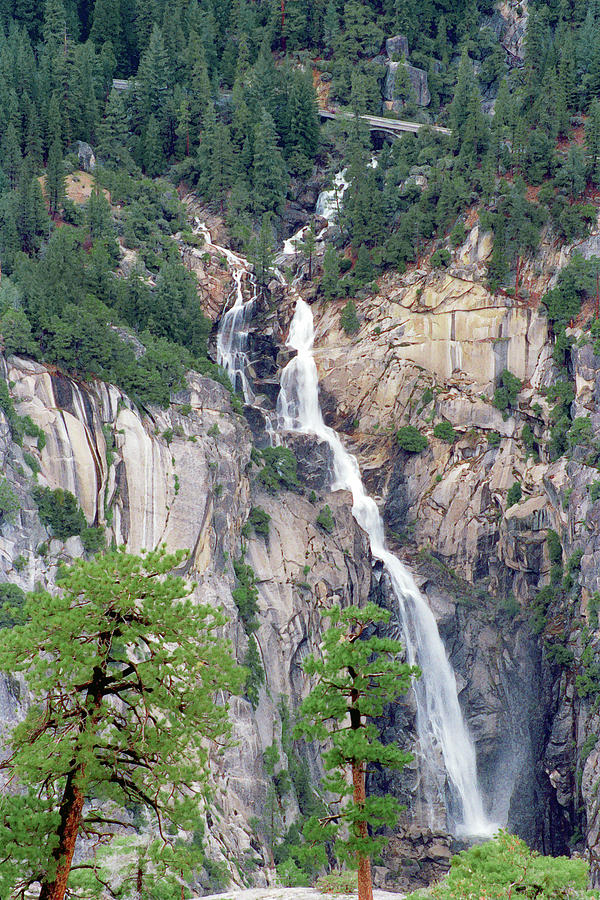
fineartamerica.com 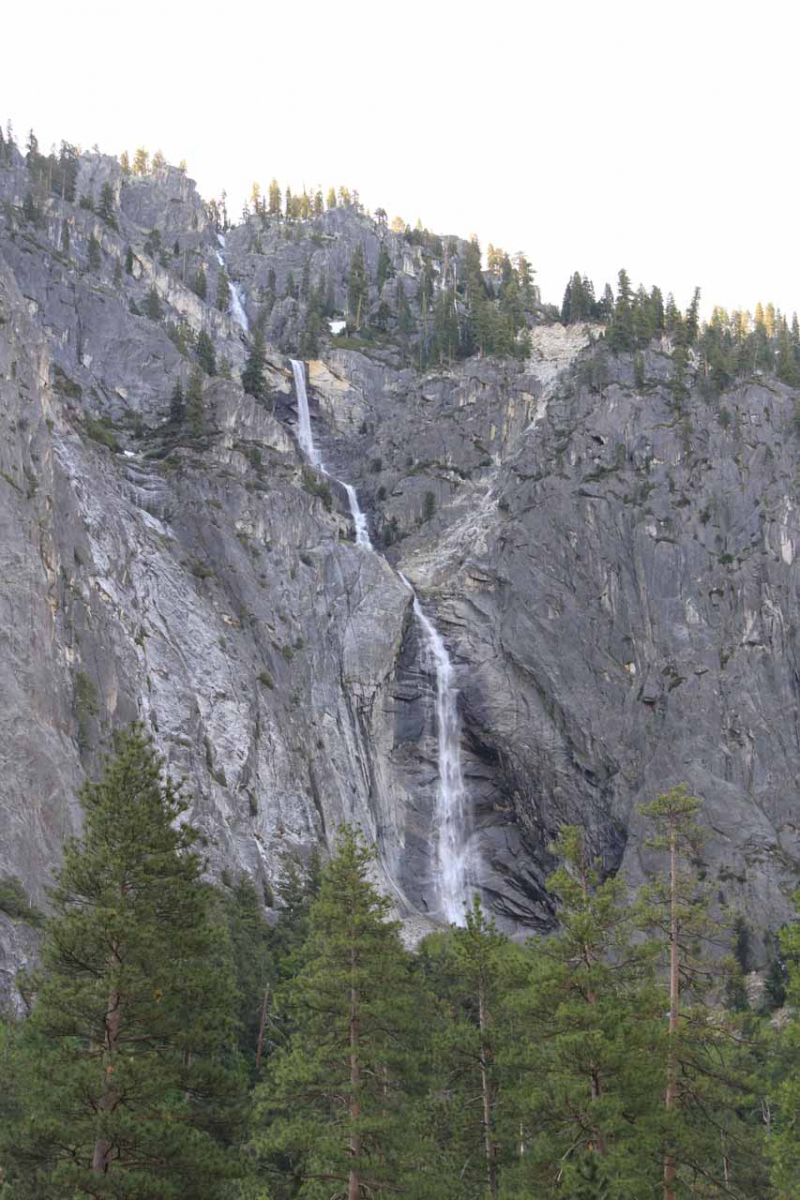
world-of-waterfalls.com -
Bridalveil Falls is one of the most noticeable waterfalls in California's Yosemite Valley. The waterfall runs constantly and falls from a height of 200m on granite cliffs carved with ice. The main source of water for Bridalveil Falls is Lake Ostrander located about 16 kilometers to the south.
Its name refers to the fall's veil-like look when the area's regular winds push the mist in a sideways direction. The Native American word for fall, Pohono, which translates to "Spirit of the Puffing Wind," also makes reference to this phenomenon.
While both are iconic waterfalls of Yosemite Valley, Bridalveil Falls is completely different from Yosemite Falls. Bridalveil Falls is one of the shorter falls in the park. It consists of three parts: top, middle, and bottom. Furthermore, Bridalveil Falls generally flows year-round while Yosemite Falls stops flowing completely in late summer and early fall.
The Bridalveil Falls path is accessible all year round. The Bridalveil Autumn Rehabilitation Project, however, has forced the closure of the trail from fall 2019 until fall 2022. Although very slippery and often crowded, the paved path to Bridalveil Falls is one of the easiest and most beautiful of all the trails leading to the falls.
In sum, Bridalveil Falls:
- The most noticeable waterfalls in California's Yosemite Valley.
- Run constantly and falls from a height of 200m on granite cliffs carved with ice.
- The paved path to Bridalveil Falls is one of the easiest and most beautiful of all the trails leading to the falls.
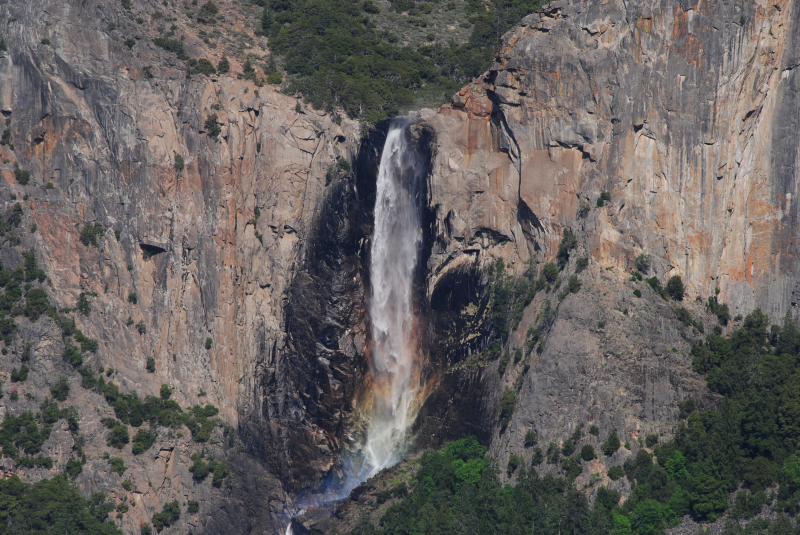
wikipedia.org 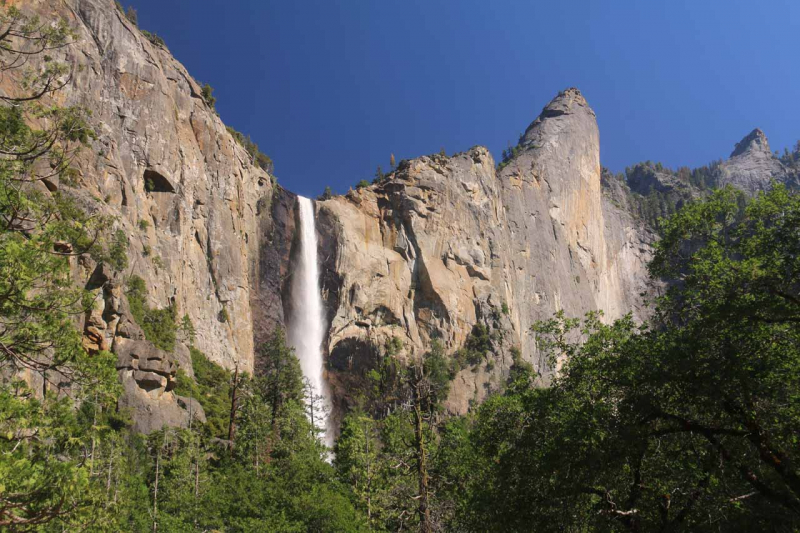
world-of-waterfalls.com -
At the western end of Yosemite Valley in Yosemite National Park, Silver Strand Falls is a westernmost waterfall that cascades down to Meadow Brook at 574 feet (175 meters).
Autumn Inspiration was the initial name of the falls, although it was never widely utilized. In the years that followed, it became known as the Widow's Tears because of the fact that the falls only flowed for a very short period of time.
Silver Strand Falls are located between Old Inspiration Point and Stafford Point where Meadow Brook enters Yosemite Valley after draining water from a small valley north of Badger Pass. The basin supplying water to the falls is quite modest as Meadow Brook continuously dries up in mid-July in years with more snowfall and can happen as early as June.
Most references to Silver Strand Falls give an incorrect elevation of 1,170 feet. This number is considered to have been provided by USGS surveyor Francois Matthes in 1916, like many other waterfalls in Yosemite Valley. While virtually all of the waterfalls that Matthes measured more than a century ago were very accurate, Silver Strand Falls' height is incorrect. According to the current USGS El Capitan quadrangle, the real height of the falls is around 574 feet, which is about half of Matthes' estimate.
In short, Silver Strand Falls:
- A westernmost waterfall at the western end of Yosemite Valley in Yosemite National Park.
- The waterfall's original name was Autumn Inspiration and Widow's Tears.
- The basin supplying water to the falls is quite modest as Meadow Brook continuously dries up.
yosemitechickon 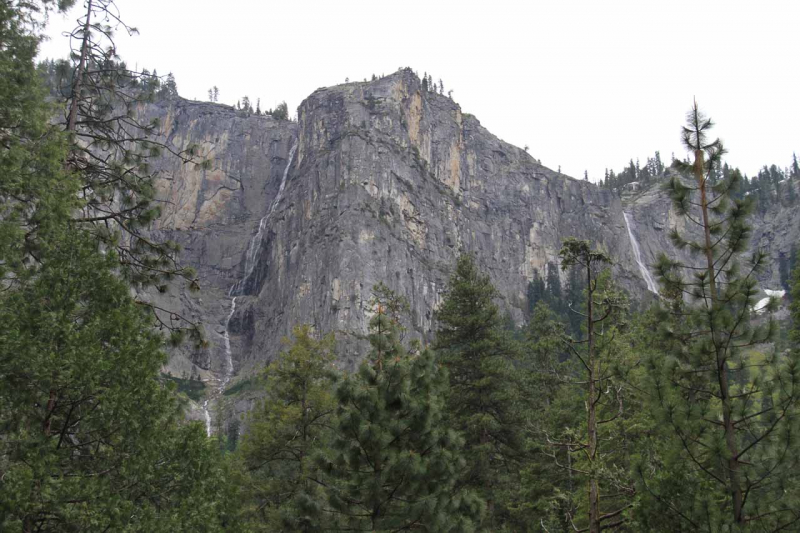
world-of-waterfalls.com -
As the largest single-drop waterfall in North America, Ribbon Falls is named the longest waterfall in Yosemite National Park in California and falls from a rock west of El Capitan.
Ribbon Falls's water source is nourished by melting winter snow. Thus, despite being dry for most of the year, the waterfall still stands at a breathtaking 1,612 feet (491 m) in spring. During particular years in the winter months, an ice cone develops at its base similar to the cone that normally forms beneath Upper Yosemite Falls. They can reach depths of 200 feet compared to the maximum depth of the ice cone below Upper and Lower Falls of 322 feet.
With a total height of 1,612 feet, Ribbon Falls is one of the tallest unbroken waterfalls in the United States and the tallest steep falls on earth. Ribbon Creek drains a region of about 4 square miles immediately west of El Capitan, the body of water that crosses Yosemite Valley at a height of roughly 3,000 feet above the valley floor. The creek flows down a cork-shaped plain of rock that deflects the falls and falls to the right of the original stream as it flows out of the valley's edge. The stream makes contact with the cliff face for the first 200-300 feet of the vertical of the falls, then free-falls for more than 1,000 feet before erupting into a steep strip.
To conclude, Ribbon Falls:
- The largest single-drop waterfall in North America and the longest in Yosemite National Park in California.
- The water source of Ribbon Falls is nourished by melting winter snow.
- With a total height of 1,612 feet, Ribbon Creek drains an area of approximately 4 square miles just west of El Capitan.
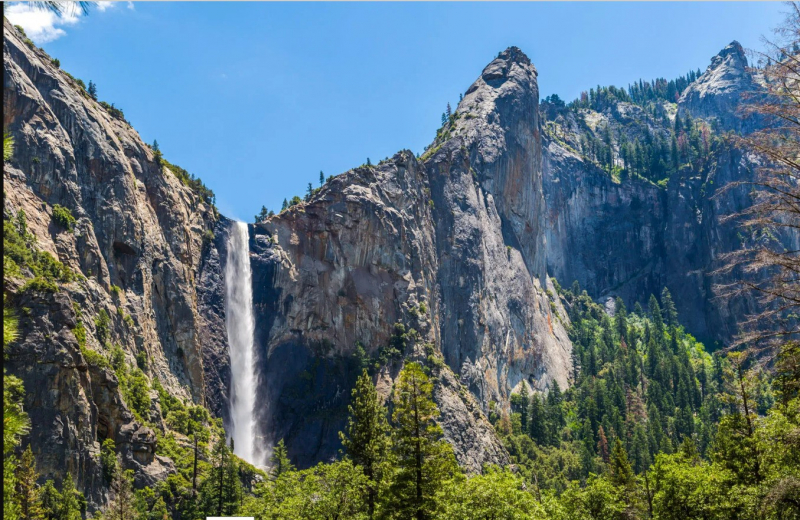
cdn.britannica.com Grand Canyon Conservancy -
In Yosemite National Park in California, Nevada Falls is a 594-foot (181 m) waterfall on the Merced River. It lies beneath the granite dome known as the Liberty Cap at the western end of Little Yosemite Valley.
The "bent" shape of the waterfall, in which the water falls freely for about a third of its length to a steep slick-rock slope, is a feature that distinguishes it from other waterfalls. Its present moniker comes from the water's mid-fall encounter with the rock face, which causes a considerable volume of mist to spread out over a large area and gives the fall a tumultuous, whitewater aspect (Nevada is a Spanish word meaning "snowy").
The waterfall was given the name "Nevada" by Lafayette Bunnell. He assumed it was the closest waterfall to the Sierra Nevada and because the word was suitably suggestive of a snowy partner, thus it was given the name Nevada Falls. In his mind, the white, foamy water that rushed down Yo-wy-we from the snow-covered mountains was an enormous avalanche of snow.
The climb to Nevada Falls is located along the Mist Trail, 3 miles (4.8 km) from the Yosemite Valley trailhead. To get to the summit, you must first trek to Vernal Fall and then another 2 miles (3.2 km) upwards.
In sum, Nevada Falls:
- A 594-foot (181 m) waterfall, located in Yosemite National Park in California.
- A curved shape and lies beneath the granite dome at the western end of Little Yosemite Valley.
- Was named "Nevada" by Lafayette Bunnell.
- The Nevada Falls climb is along the Mist Trail, 3 miles (4.8 km) from the top of the Yosemite Valley trailhead.
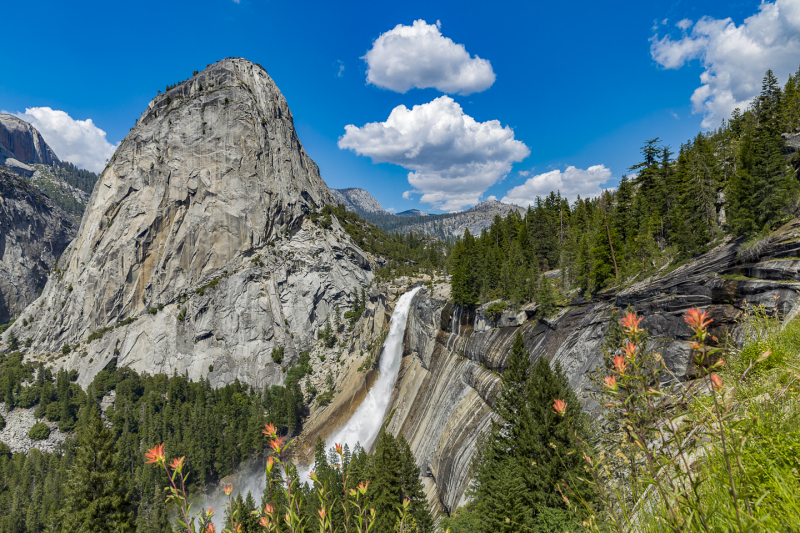
boundtoexplore.com 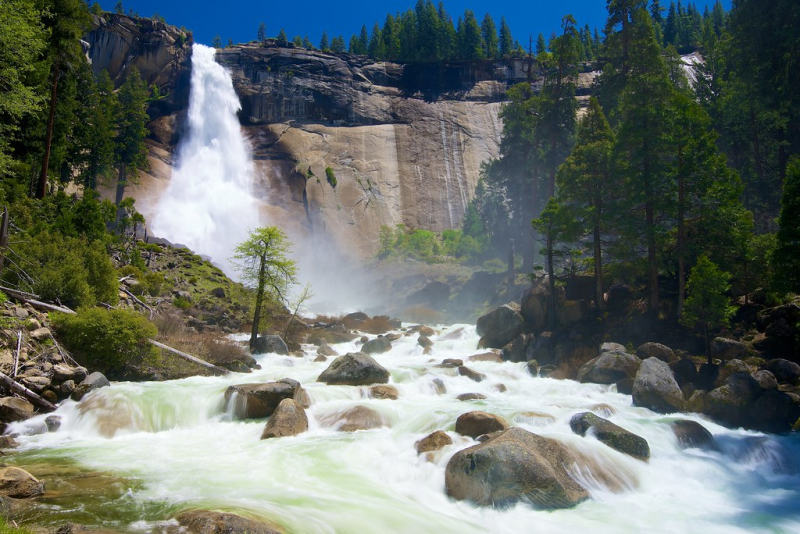
live.staticflickr.com -
Vernal Falls, one of Yosemite's most majestic waterfalls at 317 feet (96 meters), is located just downstream of Nevada Falls on the Merced River, in Yosemite National Park, California. Unlike Yosemite Falls or Bridalveil Falls, visitors cannot see the falls from the bottom of the valley.
The waterfall remains in constant motion year-round, although by the end of the summer its volume has somewhat decreased and it can break into several strands as opposed to a continuous curtain of water.
You have a few trekking choices if you want to see the waterfall up close. Vernal Falls is easily seen from Glacier Point and the Mist Trail. The Mist Trail, which starts close to the Happy Isles Nature Center, is the easiest option. You may either walk from Curry Village or take the free shuttle bus to the Happy Isles Nature Center. From there, continue on the route for another mile or so to reach the footbridge over Vernal Fall. If you wish to explore the mists of this really spectacular waterfall, the Mist Trail is a fantastic choice. Wintertime typically sees the lower portion of the road leading to Vernal Falls open, allowing visitors to stroll the mile to the pedestrian bridge and take in the breathtaking scenery from the foot of the falls.
Hiking the Panorama Trail is another way to take Vernal Falls. From Glacier Point, take a side trip downhill to the Mist Trail, where you may then stroll beside Nevada and Vernal Falls as you descend into the valley.
In short, Vernal Falls:
- Yosemite's most majestic waterfall with a height of 317 feet (96 meters).
- Located just downstream of Nevada Falls on the Merced River, in Yosemite National Park, California.
- The waterfall remains in constant motion year-round and is easily visible from Glacier Point and Mist Trail.
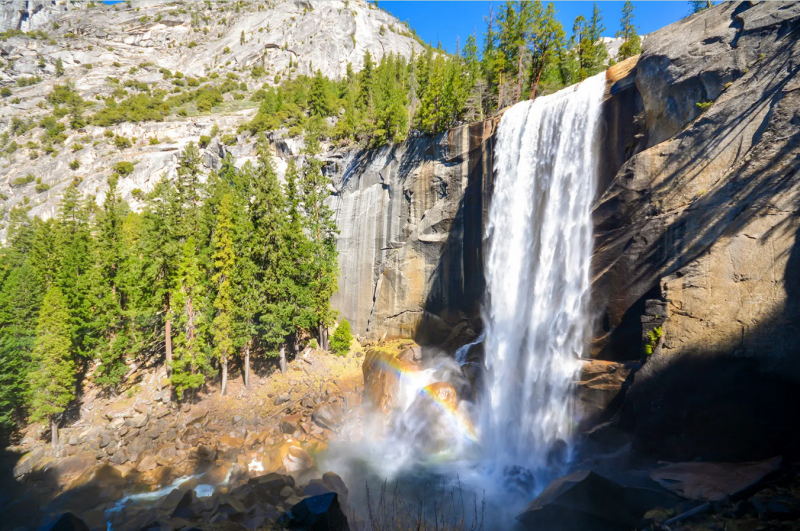
britannica.com Inspire My Path -
Illilouette Falls is a 381-foot (116 m) waterfall in Yosemite National Park that is located on the Illilouette Creek branch of the Merced River. It is situated across from Vernal Falls in a narrow canyon that penetrates Yosemite Valley's south wall. The name of the waterfall has also been lost over time along with its meaning.
The falls are clearly visible to the south from both the John Muir Trail and the Mist Trail. However, during low-flow months, the water level can disappear completely from this angle. And the best vantage point to view the falls is from the Panorama Trail as it descends from Glacier Point. Moreover, because the narrow canyon is full of rocks and there are many rapids in the rainy season, there is no road leading to the foot of the falls. Although not recommended, you can still go to the foot of the falls in the months with low water flow.
Although not quite as visually striking as the others and difficult to see from above, Illilouette Falls is still named one of the five largest waterfalls of Yosemite Valley. Illilouette Fall is a really great waterfall for anyone visiting Glacier Point and looking for something to relax in. Regardless of the mixed opinions of many, the waterfall is still one of the most beautiful waterfalls in Yosemite, California.
To conclude, Illilouette Falls:
- A 381-foot (116 m) waterfall located in Yosemite National Park, opposite Vernal Falls.
- The falls are clearly visible to the south from both the John Muir Trail and the Fog and Panorama Trail.
- A really great waterfall for anyone visiting Glacier Point and looking for something to relax.
California Through My Lens 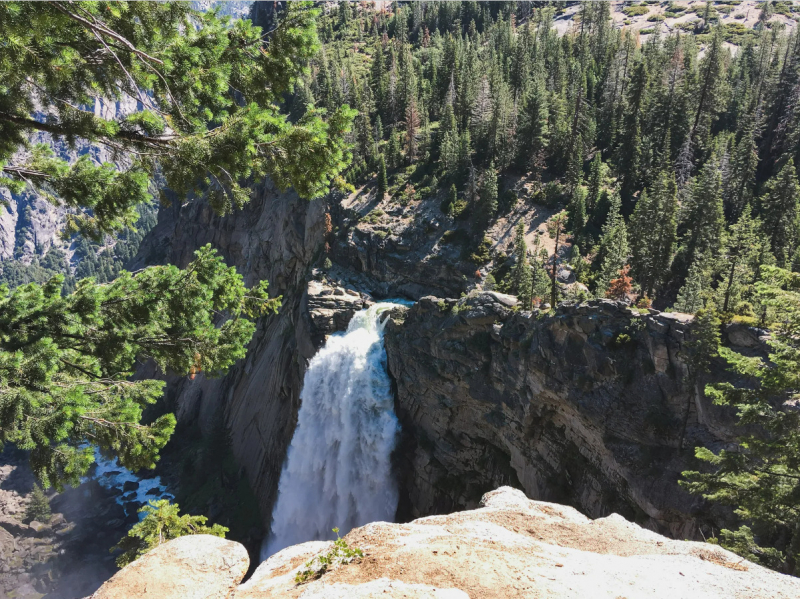
moderatelyadventurous.com -
Horsetail Falls is a seasonal waterfall in Yosemite National Park in California that only flows in winter and early spring. If Horsetail Falls is flowing at the perfect time in February, the sunset will light up the waterfall, making it a vibrant orange and magenta color. The word "Firefall" is often used to describe this phenomenon in honor of the Yosemite Fire Disaster, a man-made event that once occurred here.
A clear sky, enough snowfall to form the fall, a warm enough temperature to melt the snow, and the appropriate angle for the sun's rays to illuminate the fall are all necessary conditions for Firefall occurrence, and not every year can observe this phenomenon.
Rain or snowmelt serves as the waterfall's primary water supply. It divides into two streams that run side by side, the eastern cascade dropping 1,540 feet (470 meters), and the western cascade plunging 1,570 feet (480 m). At certain times of the year, the waterfall often drops another 150 meters (480 feet) over steep rock formations. As a result, this waterfall can reach heights between 2,030 and 2,070 feet (630 m). You may see and take pictures of it from a little clearing next to the picnic area on the north road exiting Yosemite Valley to the east of El Capitan.
In sum, Horsetail Falls:
- A seasonal waterfall in Yosemite National Park in California.
- "Fire Falls" is the phenomenon of sunlight that lights up a waterfall, making the waterfall a vibrant orange and magenta color.
- Rain or snow melt serves as the waterfall's main water supply.
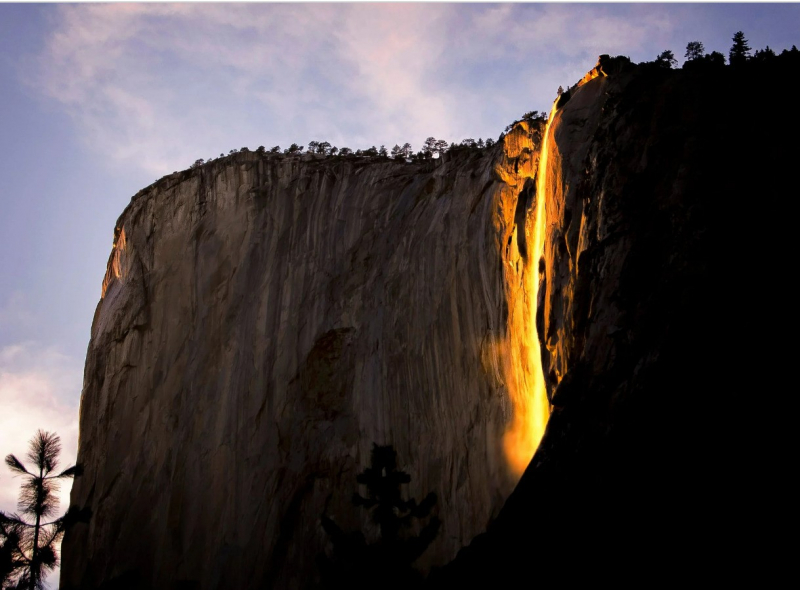
images.rove.me Wonder World












